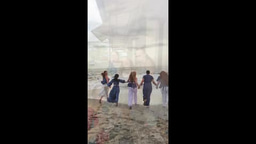Leading to Liberate: Lessons Learned from bell hooks
The first time I read bell hooks was in a second-year international relations course where I read the introduction to her work, Teaching to Transgress. In her book, she describes her early black female teachers at her segregated southern high school as some of the most impactful leaders she’d encountered over the course of her life. Her explanation of education as both transformative and liberatory in the hands of a committed leader resonated deeply with me. I was struck by the power of teachers to create change in the world from their position of leadership, and I hoped to be that kind of teacher one day. When I started designing my leadership in action program, centred around creating a women’s history curriculum based in feminist pedagogy, I always had hooks in the back of my mind. So, when I started my research, Teaching to Transgress was the first text I read.
The kind of teacher hooks describes in her work often reminded me of some of my favourite teachers throughout my own education. They are open to questions. They do not dictate to the class or assign work without explanation. They do not rely on hierarchy and their place as the leader for their authority and respect, but instead work to earn that respect from their students through their work and effort in the classroom. With this new model of a feminist teacher and leader in mind, I interrogated my past teachers to see how they had fit into this new ideal, hoping to find lessons for my own teaching style in their successes and failures.
I always hated the teachers who commanded a classroom through a sense of their own superiority, and in those classes I learned far less than my classes with teachers who treated me with a sense of equality. These were often also the teachers who gave us time to speak and discuss what we were learning in class, who showed genuine interest in our lives and feelings, and who encouraged us to ask questions and even to disagree. The teachers who tried to command the classroom like it was a battleship, often rolling their eyes at questions, the worst even going so far as to disregard questions for their simplicity, taught me the least. Most of them could not and would not take criticism no matter how constructive, and they had little interest in us outside of getting us in and out of their class. Between my own introspection and my reading of hooks I found numerous lessons for stepping into this new leadership role as a teacher during my second Laidlaw summer.
Overall, the leader that I hope to be when I teach my curriculum is one whose students respect me as an equal. I want to be a teacher who students know care about them and about the information and life skills that can be taken away from the classroom. I want to be a leader who encourages discussion, disagreement, contestation because through these sometimes-difficult conversations we can all learn, even if we are meant to be the ones leading the helm. From hooks I learned leaders do not have to know everything, nor should they pretend to. When we step into positions of power, we do not lose our personhood, which means we will err. It is important to recognize and learn from our mistakes and from the people around us because even if we are the most qualified person to lead in the room, there is always room to learn and grow. I believe through this openness, leaders can facilitate classrooms where everyone can become committed to learning and growing in a safe and supportive space.
Bibliography
hooks, bell. Teaching to Transgress. Routledge, 1994.





Please sign in
If you are a registered user on Laidlaw Scholars Network, please sign in